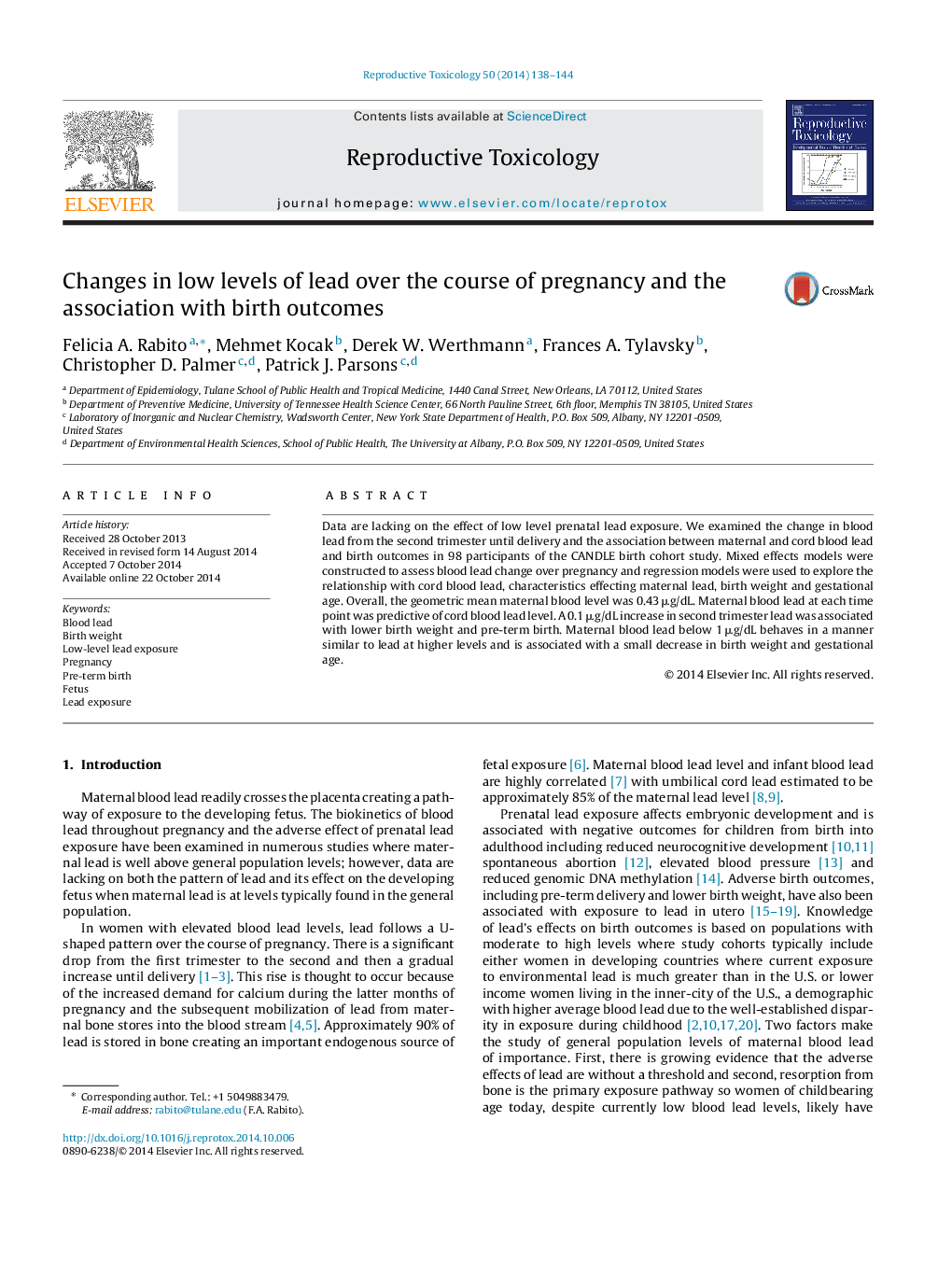| Article ID | Journal | Published Year | Pages | File Type |
|---|---|---|---|---|
| 2593503 | Reproductive Toxicology | 2014 | 7 Pages |
•Maternal blood lead <1 μg/dL follows the pattern over pregnancy observed at higher levels.•Maternal blood lead <1 μg/dL is associated with cord blood lead level.•Second trimester blood lead is associated with lower birth weight and an increase in pre-term birth.•Further research is needed on the effect of low lead levels and birth outcomes.
Data are lacking on the effect of low level prenatal lead exposure. We examined the change in blood lead from the second trimester until delivery and the association between maternal and cord blood lead and birth outcomes in 98 participants of the CANDLE birth cohort study. Mixed effects models were constructed to assess blood lead change over pregnancy and regression models were used to explore the relationship with cord blood lead, characteristics effecting maternal lead, birth weight and gestational age. Overall, the geometric mean maternal blood level was 0.43 μg/dL. Maternal blood lead at each time point was predictive of cord blood lead level. A 0.1 μg/dL increase in second trimester lead was associated with lower birth weight and pre-term birth. Maternal blood lead below 1 μg/dL behaves in a manner similar to lead at higher levels and is associated with a small decrease in birth weight and gestational age.
